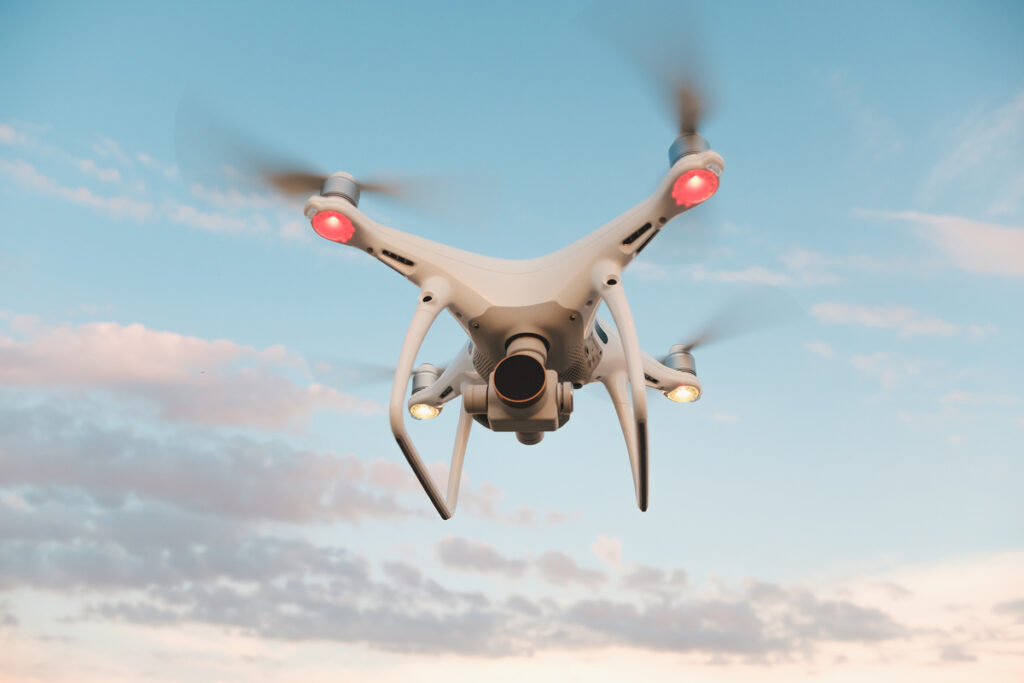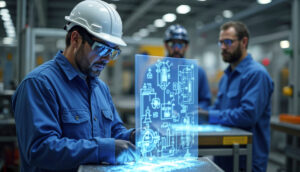Exclusive Neuroject Article: Drones have emerged as an innovative and game-changing tool in the construction industry. This piece, “The Importance of Drones in Construction: 7 Key Reasons,” sheds light on the transformative role they play in modern construction practices. Drones, also known as Unmanned Aerial Vehicles (UAVs), have revolutionized the sector by enabling unprecedented data collection, improving safety measures, increasing productivity, and driving cost-effectiveness.
As you delve into the article, you will discover the seven fundamental reasons why drones are integral to the future of construction technology, each reason reinforced by practical examples and real-world case studies. From surveying expansive construction sites to inspecting hard-to-reach areas, drones are rapidly becoming indispensable tools in the construction landscape.
This article seeks to highlight the tangible benefits and potential applications of drones in Construction, giving you a comprehensive understanding of their pivotal role in shaping the construction industry.
Table of Contents
The importance of Drones in Construction
Drones have revolutionized the construction industry, significantly enhancing efficiency and safety. Their ability to capture aerial imagery and data is unrivaled, providing real-time, bird’s-eye view insights that facilitate accurate project planning and management.
These unmanned aerial vehicles (UAVs) enable detailed surveys of large areas in a fraction of the time traditional methods require, accelerating site inspections and topographic mapping. This not only speeds up project timelines, but also reduces human error and the inherent risks associated with manual data collection.
Moreover, drones are invaluable for monitoring construction progress. With their help, project managers can effectively track work, manage resources, and identify potential issues before they escalate, thereby reducing delays and cost overruns.
Equipped with advanced sensors, drones in Construction can also conduct structural inspections of high-risk areas, such as skyscrapers or bridges. This prevents workers from exposure to hazardous conditions, prioritizing safety without compromising accuracy.
Furthermore, the visual documentation captured by drones provides a comprehensive record of construction progress, fostering transparency between stakeholders and improving dispute resolution.
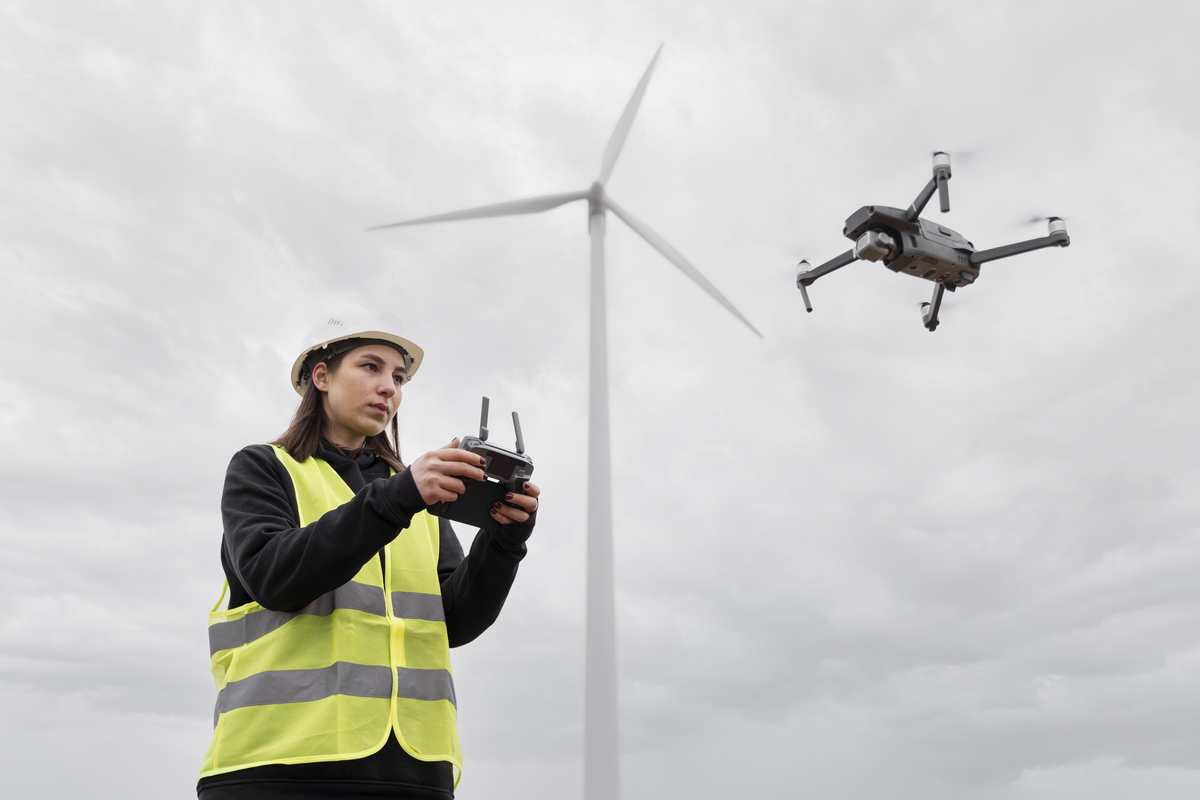
1. Efficient and Accurate Data Collection
Drones equipped with advanced sensors and cameras can rapidly gather high-resolution aerial data, reducing manual labor and surveying time. Consider a construction site, where traditionally, ground surveyors would take days, sometimes weeks, to assess an area accurately. Now, a drone can cover the same area in a matter of hours, providing real-time data for immediate use.
These unmanned aerial vehicles (UAVs) excel in capturing comprehensive topographic, volumetric, and spatial data with unprecedented precision. For example, by using photogrammetry, a drone can generate 3D models of the construction site. These models can be analyzed for volumetric measurements, such as calculating the amount of earth to be moved or the volume of concrete needed, thus aiding in efficient resource planning and minimizing waste.
Another practical application is in site inspections. Drones in Construction provide a safer and more cost-effective alternative to scaffolding or cranes for inspecting hard-to-reach or potentially dangerous areas. They can also use thermal imaging to detect potential structural issues, like heat loss or water leakage, which might not be visible to the human eye.
Furthermore, drones in Construction facilitate continuous site monitoring. They can quickly and repeatedly survey a site, providing consistent data sets that enable accurate progress tracking, early issue detection, and timely decision-making.
Finally, the georeferenced images collected by drones can be integrated with Geographic Information System (GIS) or Building Information Modelling (BIM) tools. This integration allows construction professionals to overlay the drone data with existing site plans, providing a comprehensive, up-to-date visual representation of the project.
In conclusion, drones are not just an innovative tool in the construction industry, but a necessity for efficient and accurate data collection. By streamlining processes and enhancing precision, they significantly contribute to the overall project efficiency and cost-effectiveness.
2. Enhancing Site Inspections and Safety
Enhancing Site Inspections:
Efficiency and Accuracy: Drones provide a quick and comprehensive method for site inspections, thereby improving efficiency and accuracy. They allow for real-time imagery and data collection, reducing reliance on slower manual evaluations, and minimizing human error.
Hard-to-reach areas: Drones can easily access areas that are difficult or dangerous for humans to reach. This enables a full-site inspection, including high and confined spaces, with detailed high-definition imagery.
Structural Anomalies Detection: Drones in Construction help identify potential defects, such as cracks or deformations, early on. This allows for swift corrective measures and preventive maintenance, thus avoiding future issues.
Integration with Advanced Technology: Drones can be combined with software and technologies like AI, machine learning, and photogrammetry. AI-enabled drones can automatically analyze images, detect anomalies, while photogrammetry allows for accurate 3D site modeling.
Promoting safety is a crucial aspect of any construction project, and drones have proven invaluable in this respect. By minimizing human exposure to potentially hazardous site conditions and offering advanced hazard identification, drones significantly contribute to enhancing overall safety:
Reduced Physical Presence: Using drones in Construction for site inspections reduces the need for personnel to be physically present in hazardous areas. This lowers the risk of accidents such as falls from height or exposure to hazardous materials.
Hazard Identification: Drones allow for early hazard identification, preventing potential safety incidents before they occur. By providing a bird’s-eye view, drones can reveal safety hazards that may not be visible at the ground level.
Minimized Work Stoppages: With improved safety measures from drone usage, work stoppages due to accidents can be significantly reduced. This not only protects employees but also saves costs associated with downtime.
Predictive Safety Analysis: Advanced drones can perform predictive safety analysis, providing insights into potential future hazards and enabling preemptive measures.
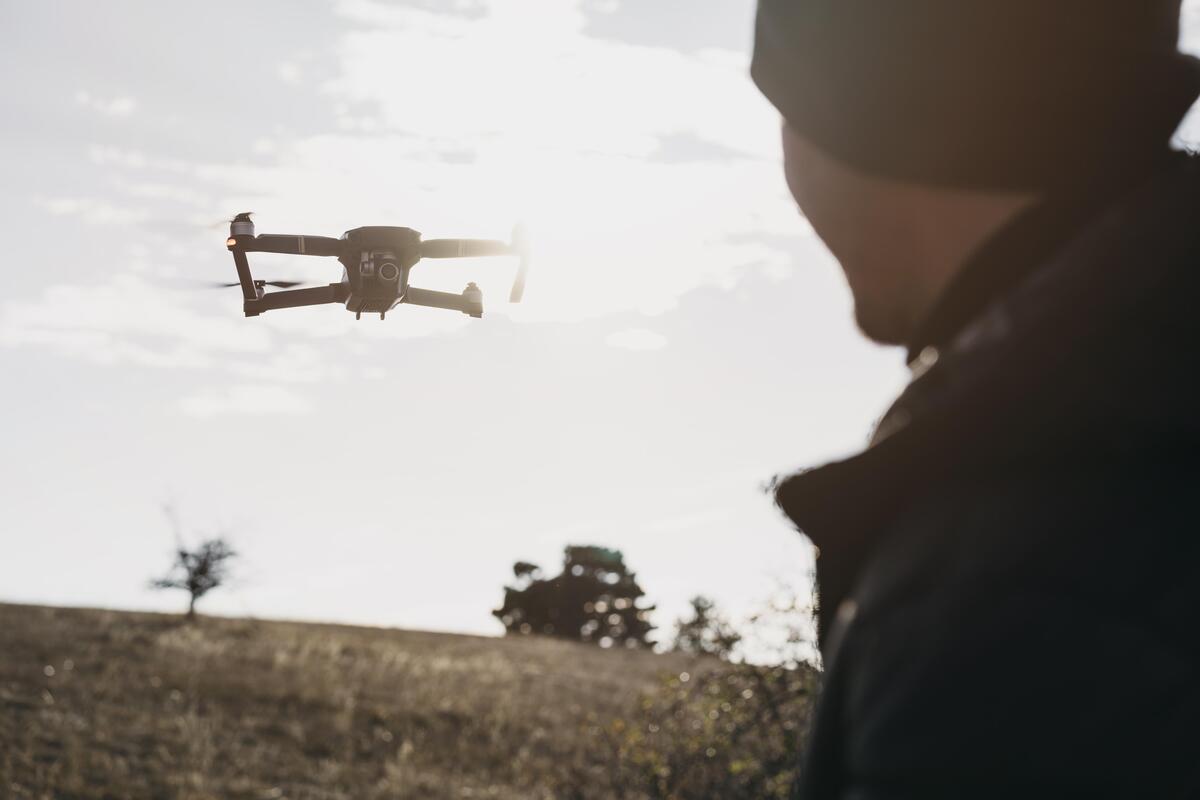
3. Cost-Effective Project Monitoring
Drones in Construction are fundamentally cost-effective for several reasons.
Firstly, the initial investment in drone technology can be recouped in the time saved on manual inspections. Human surveying requires considerable labor hours, while a drone can capture high-resolution images of a large area quickly, reducing labor costs significantly.
Secondly, drones in Construction can eliminate the need for additional expensive equipment such as helicopters for aerial views or heavy machinery for hard-to-reach areas. They can navigate these areas swiftly and safely, reducing the overall operational costs of a project.
Thirdly, by identifying potential issues early in the construction process, drones can save on the expense of correcting costly mistakes or dealing with project delays. Early detection of construction errors or misalignments with the project plan leads to cost savings by preventing the cascading effect of unnoticed errors.
In terms of maintenance, drones also prove to be cost-effective. Unlike heavy machinery, drones require minimal upkeep and can be operated at a fraction of the cost. They’re also less likely to cause damage to the project site, eliminating repair costs that may occur with more traditional inspection methods.
The use of drones in Construction also reduces the risk of worker injuries by limiting human involvement in potentially hazardous areas, which could lead to decreased insurance premiums. The reduction of risk and liability cost is a significant advantage in industries where safety is paramount.
Finally, integrating drones with other technologies like AI can further enhance cost-effectiveness. AI can analyze the data drones collect to predict future problems, allowing for preventative measures. This proactive approach can lead to substantial long-term cost savings by avoiding the higher costs of reactive maintenance.
To sum up, drones’ cost-effectiveness lies in their ability to reduce labor and operational costs, prevent costly errors, minimize maintenance and insurance costs, and enhance the overall efficiency of project monitoring. By implementing drone technology, construction projects can realize significant cost savings and improvements in productivity.
Suggested article for reading: Construction Monitoring Solutions: Your Complete Guide
4. Superior Communication and Collaboration
In the construction industry, communication and collaboration are pivotal to project success. Drones in Construction can significantly enhance these aspects.
In terms of communication, drones provide high-resolution images and real-time video feedback, delivering detailed visual reports of the construction site that are instantly accessible. This kind of immediate, visual data sharing minimizes misunderstandings or miscommunications, ensuring everyone on the project is updated with the same information at the same time. Teams can make more informed, immediate decisions, leading to improved efficiency and reduced project timelines.
Furthermore, drones equipped with specialized software can translate this visual data into reports, charts, or 3D models, which can then be easily communicated to different stakeholders – from site workers to project managers and clients. This simplifies complex data and makes it digestible for all, enhancing communication effectiveness.
On the collaboration front, drones foster a shared understanding of project status among different teams. With the visual data and models created by drones, architects, engineers, site supervisors, and workers can collectively visualize the project, understand potential challenges, and collaboratively devise strategies to overcome them.
Moreover, real-time drone data supports collaborative problem-solving. Issues identified by drones in Construction can be discussed by teams across different disciplines, enabling a collective approach to decision-making. This collaborative engagement helps mitigate risks and ensure the project aligns with the predefined quality standards and timelines.
Overall, by ensuring real-time, transparent, and effective communication of accurate data, drones are promoting collaboration and improving overall project management in the construction sector.

5. Facilitating Surveying and Mapping
Surveying and mapping are integral parts of the construction process, ensuring that structures are built accurately and safely. Traditionally, these tasks required a significant amount of time and manual labor. However, drone technology is now reshaping these processes, increasing both efficiency and accuracy.
Drones in Construction, fitted with advanced technologies such as Light Detection and Ranging (LiDAR) and high-resolution cameras, have proven to be game-changers in construction surveying and mapping. They offer a birds-eye perspective, capturing high-quality, georeferenced imagery. These images are far superior to manually collected data and can be obtained in a fraction of the time. With drones, surveying and mapping that once took days can now be completed in just a few hours.
This aerial data is then processed using sophisticated software, producing digital outputs such as topographical maps, 3D models, and orthophotos. These outputs provide a clear and precise representation of the site, enabling better project planning and decision making. By integrating this data into Building Information Modelling (BIM) systems, construction companies can perform real-time site monitoring and progress tracking.
Repeated drone surveys throughout the construction project enable the creation of time-lapse imagery. This can identify subtle changes and potential issues at an early stage, allowing for prompt mitigation measures. The advantage of early detection not only helps maintain construction quality but also ensures project timelines and budgets are adhered to.
While drones in Construction present undeniable benefits for construction surveying and mapping, there are challenges to consider. Proper drone operation requires specialized knowledge, from understanding flight regulations to planning and safely conducting flights. Also, as drones collect vast quantities of data, robust data management strategies are vital.
By investing in operator training and comprehensive data management systems, construction companies can fully leverage the potential of drone technology in surveying and mapping.
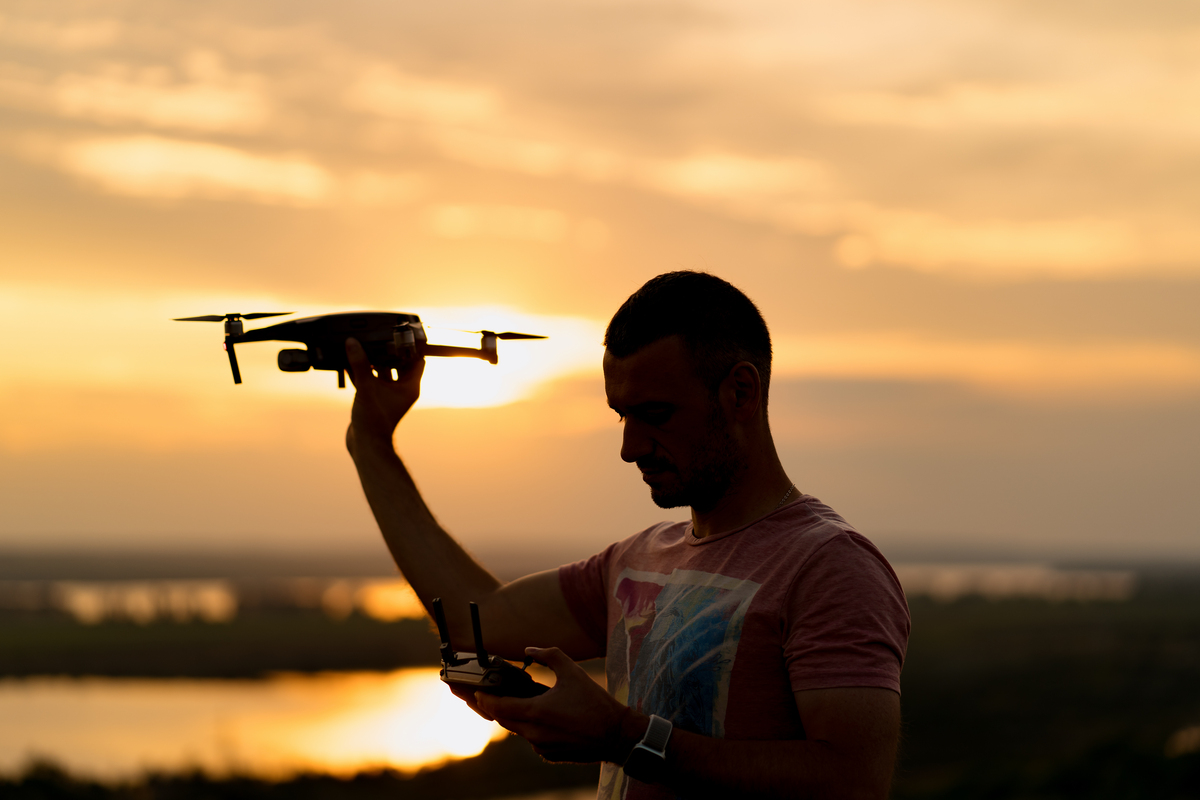
6. Environmentally Friendly Option
Drones in Construction are revolutionizing this industry with their potential to foster sustainability. They offer numerous environmentally friendly benefits, shaping construction practices towards more sustainable methods and reducing the environmental footprint of projects. Here are some key ways in which drones contribute to a greener construction industry:
1. Carbon emissions reduction: Drones minimize the need for physical labor and heavy machinery, which significantly reduces carbon emissions associated with construction activities.
2. Efficient resource management: The detailed data collected by drones, including 3D models and surveys, enables accurate estimation of materials needed for construction, minimizing waste and optimizing resource utilization.
3. Waste management: Drones in Construction can monitor and track waste on construction sites, ensuring proper disposal practices are followed, thereby reducing the environmental impact of waste.
4. Environmental impact assessment: Drones play a crucial role in assessing the environmental impacts of construction projects. They can detect changes in local ecosystems, monitor pollution levels, and document the effect of construction activities on the surrounding environment.
5. Performance monitoring: Drones in Construction can monitor the performance of renewable energy installations, providing data for necessary adjustments or maintenance, thereby maximizing energy efficiency and lifespan.
In summary, drones are a valuable tool for sustainable construction practices. Their ability to reduce carbon emissions, optimize resource utilization, facilitate waste management, and assess environmental impacts makes them an integral part of the industry’s shift towards sustainability.

7. Rapid Response to Unforeseen Events
In the construction sector, drones play a pivotal role in delivering rapid responses to unforeseen events. When an unexpected event occurs, an immediate site assessment is essential, and drones are the perfect tool for this task.
1. Immediate Site Assessment: Drones in Construction can instantly perform aerial surveys following an unexpected event. Their high-resolution cameras and sensors deliver real-time visual data that is immediately available for decision-making, dramatically speeding up response times.
2. Hazard Evaluation: In potentially dangerous situations, such as structural failures or hazardous material spills, drones can be deployed to swiftly gauge the extent of the hazard. They offer crucial insights into the situation without jeopardizing human safety, enabling an efficient and appropriate response.
3. Damage Inspection: Drones in Construction can inspect structures for damage quickly and effectively after natural disasters or accidents. Their ability to capture high-resolution images aids in assessing the extent of damage, thus facilitating efficient planning for necessary repairs.
4. Rescue Operations: In catastrophic events, drones equipped with thermal sensors can help locate trapped or injured individuals. Their ability to cover large areas quickly accelerates rescue operations significantly.
5. Risk Prediction: Advanced drones, using machine learning, can analyze collected data to predict potential risks. They alert the construction team about potential disruptions, enabling them to take preventive measures before the issues materialize.
By delivering these rapid responses to unforeseen events, drones are an invaluable tool in the construction industry. They offer a blend of speed, safety, and efficiency that significantly improves project management and outcomes.
Case Study: The Odense University Hospital Project
The Odense University Hospital project, commissioned by the Region of Southern Denmark and managed by the joint venture between CMB and ITINERA, is employing advanced technology to expedite its construction process. Covering a staggering 250,000 sq. meters, once operational, the hospital will boast 10,000 patient rooms and 21 km of corridors, making it the largest recently constructed hospital in Denmark.
A crucial part of this innovative construction management is the use of the Mavic Pro 2 Enterprise Drone. This drone offers superior image quality, which has reduced the need for traditional photography on site. With its 360-degree image acquisition capabilities, it has facilitated a comprehensive understanding of the construction progress. The high-resolution photographs provide granular details, enabling prompt identification and rectification of potential construction issues.
Moreover, the drone usage has significantly improved efficiency, saving an impressive 800 work hours per month. With over 300 data collection points, it has resulted in substantial resource savings, from sparing 860 trees to reducing carbon monoxide emissions by 30 tons.
To handle the complex project requirements, advanced software platforms like HoloBuilder and Dalux are used. These platforms utilize data collected by drones and help in managing the project more efficiently.
HoloBuilder is a comprehensive construction documentation solution that creates an immersive 360-degree view of the construction site. It utilizes images from the Mavic Pro 2 Enterprise Drone, seamlessly integrating them into a single platform. This provides a holistic and detailed view of the project’s progress, enabling stakeholders to virtually ‘walk’ the site from anywhere in the world. The 360-degree reality capturing feature of HoloBuilder aids in rapid and precise decision-making, reducing project timelines and increasing productivity.
Complementing HoloBuilder is Dalux, a robust Building Information Modelling (BIM) software. BIM is an intelligent 3D model-based process that gives architecture, engineering, and construction professionals the insight and tools to more efficiently plan, design, construct, and manage buildings and infrastructure. In the Odense University Hospital project, Dalux processes the high-resolution images captured by the drone, integrating them into the BIM system. This facilitates real-time monitoring of the construction progress against the planned model, and aids in early detection of discrepancies, helping to ensure the project remains on track and within budget.
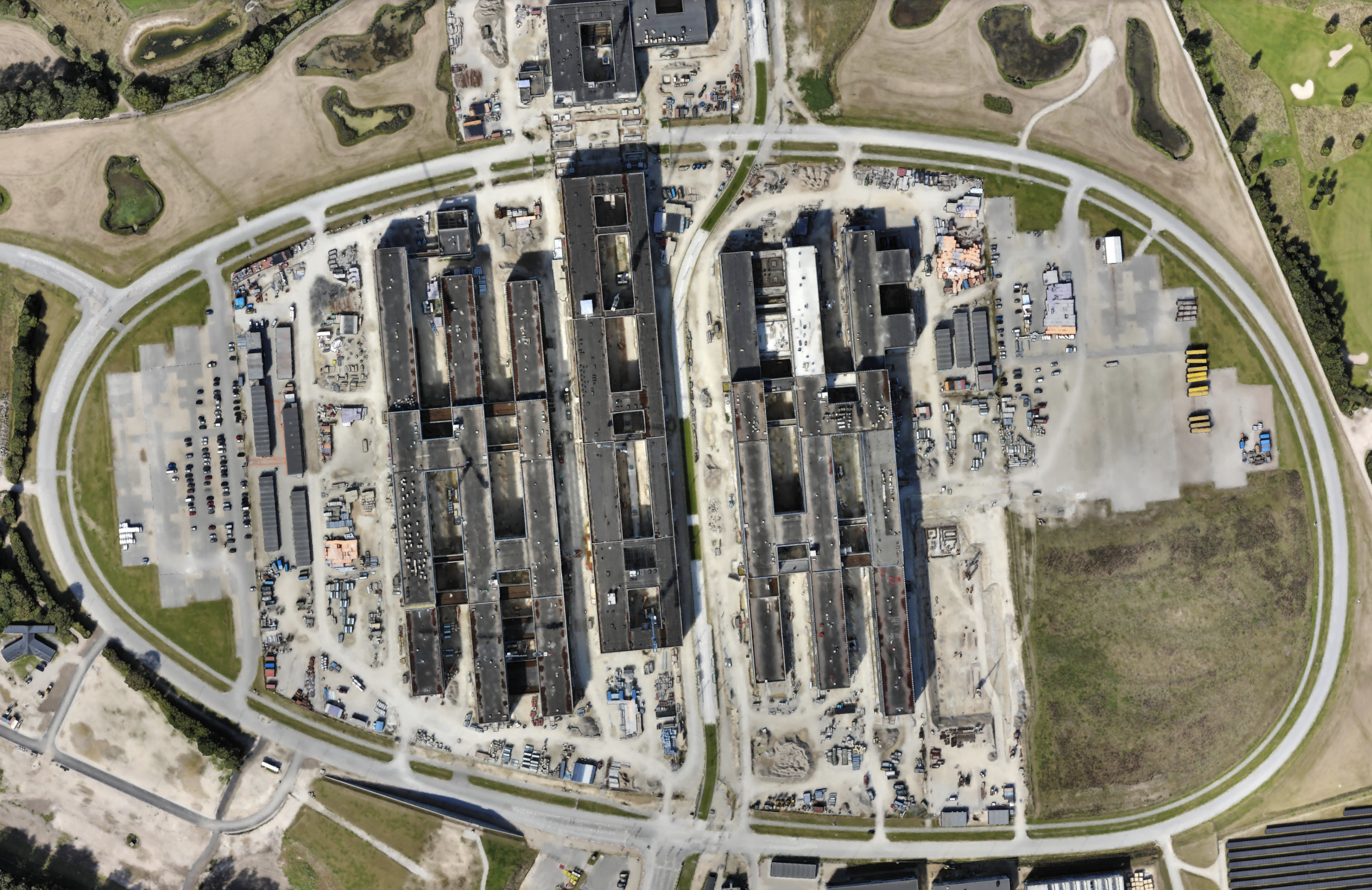
Conclusion: The Future of Construction is Here
Construction has traditionally been a labor-intensive industry, often subjected to challenges including site safety, inaccurate data collection, and environmental concerns. However, the dawn of drone technology offers transformative solutions, unveiling a new chapter for the industry – the future of construction is already here.
Drones in Construction are capable of performing tasks such as site surveying, structural inspections, and progress monitoring with speed and accuracy previously unachievable. This allows for real-time decision making, minimizing errors, and ensuring the completion of projects within budget and time constraints.
Furthermore, drones drastically improve site safety by performing risky tasks that would otherwise put human lives at risk. They can reach inaccessible areas, inspect hazardous materials, and monitor site conditions, thereby reducing potential accidents.
Additionally, drones in Construction facilitate improved communication by providing visual updates, creating an efficient information flow between project teams and stakeholders. They also have the potential to reduce the environmental footprint of construction activities, as they allow for precise planning and minimize waste.
In conclusion, the adoption of drone technology is reshaping the construction industry, making it safer, more efficient, and environmentally friendly. As we continue to explore their potential, we step into a future where the possibilities for construction are boundless.
Suggested article for reading:
Lean Construction Principles and Practical Examples
Smart Construction Solutions in 2024
Resources:
For all the pictures: freepik & Pexels

